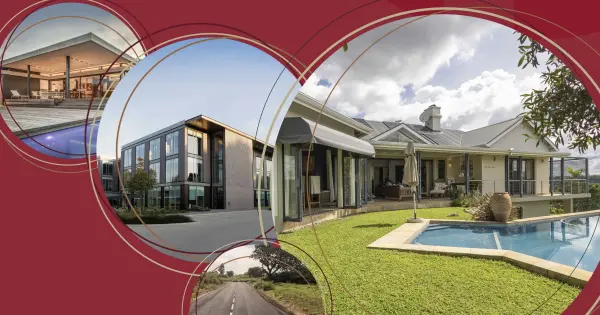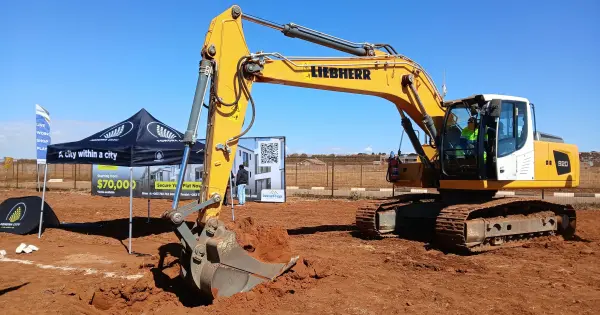At least 30 wards in the city of Harare held Councillor-led stakeholder meetings on February 5. The meetings were centered around the city’s Master Plan for development, expansion and modernization of Zimbabwe’s capital city.
Propertybook attended the meeting at the Highlands District Office, spearheaded by Senior Urban Planner Siphiwe Mangwiro and the Ward 7 Councillor Rose Ruhonde.
These city-wide meetings took place as a part of the final stages of the plan. With research conducted and data collected, residents were now offered an opportunity to share their thoughts on what should be included in the Master Plan and where it fell short.
The Master Plan is an in-depth, 200-page document. To make it easier for the general public to learn the basic elements contained in it, Propertybook, Zimbabwe’s leading property portal, has created this resource to explain what this master plan is, what it aims to do and what it means for residents in Harare.
What is the Harare Master Plan?
The master plan is the city’s roadmap for development over the next 20 years. The city hired Africa Development Studio (ADS), a consultancy company, to develop the plan.
“A Master Plan is simply a framework, sets of rules that can actually help us to guide our efforts,” Robert Neil, an ADS consultant, told Highlands residents. “That can prevent us from—let’s say, for example, if you want to build a service station, it’s supposed to show us areas that are only suitable for us to build a service station.”
The Master Plan mainly aims at addressing issues of land use designation, transportation, infrastructure and environmental stability. All of these are in the context of public services aimed at transforming Harare into a “World Class City.”
Bibbed city officials have been visible at major traffic intersections over the last few months collecting data for this very purpose.
The ultimate goal is to cater to anticipated economic growth and Zimbabwe’s relentless population increase by improving service delivery from healthcare and transportation to cluster home regulation and waste disposal.
What Are the Plan’s Main Areas of Focus?
The master plan’s main goal is to attain “world-class city status” for Harare. How does it plan on achieving this? It’s hard to really pin down in the massive document. But it all comes down to addressing four main areas.
Housing Demand
As things stand, there are currently over one million Zimbabweans on the housing backlog.
The country’s population is growing faster than the government can currently sustain. Harare is central to this.
Its population growth rate is at a steep 1.87 percent. Experts predict Harare’s population to grow from 1.6 million in 2024 to an astronomical 5.7 million within the next ten years.
Zimbabweans need housing—affordable housing especially. That makes strategic planning crucial and central to this Master Plan.
It aims at densifying the city rather than sprawling development. Cluster homes are already in-vogue with developers in and around Harare. But these pose serious problems. Not only do many violate building and zoning codes, but they also will likely add to the strain on amenities like water, electricity and waste disposal.
The Master Plan doesn’t mention how to address those issues. But it does discuss upgrading of some informal settlements, regularization and infrastructural development in areas such as Mbare and Glen View.
Transportation and Land Use
Another major focus of the Master Plan is how it looks to handle how land is used and how that fits into the transportation network.
Harare’s infrastructure is under pressure. There are more cars than the roads can handle. To alleviate the pressure, the Master Plan discusses establishing a Mass Rapid Transit system. It also aims to integrate digital traffic management technology to automate traffic flows.
The goal is to achieve all these targets sustainably, protecting natural resources. This means measures to protect wetlands and create recreational spaces while discouraging urban sprawl.
Broadly, these all contribute to the Plan’s aims towards improving urban safety. Surveillance, crime prevention strategies and efficient government coordination are all noted as important elements to utilizing land and improving the existing transportation infrastructure.
Healthcare Services and Infrastructure
The plan adequately recognizes the challenges Harare faces in healthcare. Current emergency response systems and primary healthcare centres are inadequate, especially in high-density areas. Advanced medical treatments are also lacking, particularly in regards to oncology and cardiology.
Sewerage and electrical supply inadequacies only add to these challenges.
The Master Plan aims to address all these issues. Water and sanitation systems will be expanded and modernized, aiming for fewer interruptions and better service reliability, which is critical for healthcare.
Also included are expanded provisions for community services such as schools, clinics, and recreational spaces are planned, which means improvements in everyday amenities.
Industry and Commerce
Harare’s economic importance to the country cannot be overstated. So, naturally, the plan places great importance on the need to expand industrial areas.
Workington, Graniteside and other industrial areas will see targeted investments and regulatory supported. There are planned initiatives specifically for small-to-medium enterprises.
Overall, the plan aims to relieve pressure on the city centre by encouraging economic activities in the periphery—in and around the industrial zones.
What The Master Plan Leaves Out
One of those in attendance at the Highlands meeting was Peter Morris, an expert with 40 years of experience as a public health engineer. He made some critical remarks about what the Master Plan leaves out.
“The scope of the master plan is only for Harare,” Morris remarked. “It doesn't include Chitungwiza, Epworth, Ruwa and Norton and the urban developments on the adjacent rural district council areas. Harare is a metropolitan area. A master plan is of no use unless you look at the entire metropolitan area.”
He specifically went on to highlight how the plan fails to mention the causes and sources of cholera and typhoid, the poor quality of local sewer treatment plants. He also noted that it makes no estimation of “water demand based on population” and “no analysis of future sources of water which I would have expected to be a fundamental part of a master plan.”
In addition to these fundamental omissions, the current Master Plan contains spelling mistakes, duplications and errors.
The Master Plan discusses much about what it plans on doing. But it doesn’t address how to manage what already exists, not to mention how to integrate management into its future plans. Neither does it mention specifically how it will service older properties or how it plans on meeting its deadlines.
However, the Master Plan is an admirable effort by the government, particularly in regards to meeting with local residents at the review stage of the plan and opening itself up to criticism.
What The Master Plan Means for Hararians
In the short-term and the long-term, the master plan aims to provide residents and investors with multiple elements to alter the city’s landscape:
- Improved traffic management
- A structured public transit system
- Renovation of old neighbourhoods
- Increased, low-cost housing
- Upgrades in water provision and sanitation systems
- Healthcare service upgrades
- “Smart city” infrastructure, utilities and emergency responses
- 60+ local development plans specific by ward
- Zoning laws for residential and commercial development
- Specific fiscal policies, housing finance schemes and tax incentives for hopeful homeowners and local businesses
- Environmental safeguards for waste dumping and wetlands management
The plan is a massive document still with several flaws. But the government has been willing to open it up to the public and even seek feedback. Highlands residents appeared to be jaded and rather distrustful of whether the Master Plan would come to fruition. They were equally skeptical of whether the public outreach was an empty gesture or a sincere appeal to make changes and improvements to the city’s layout, infrastructure and service delivery.
As Robert Neil said at the meeting, “We only collected the data in a space of one day, but residents have been living in that area for a specific period of time, so obviously they have more data than we do.”
The government is making an effort to involve residents in shaping the future of Zimbabwe’s property landscape. Whatever the outcome, Propertybook will be on hand to help you navigate it and understand what comes next.





